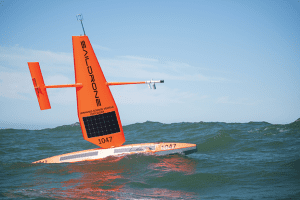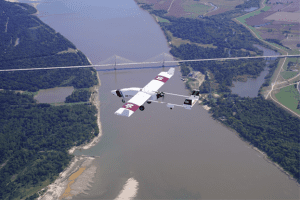The OAR ORTA UxSRTO is no longer operating.
For further information, please visit The Office of Marine and Aviation Operations (OMAO) Uncrewed Systems Program webpage.
Overview


The Uncrewed Systems Research Transition Office (UxSRTO) is helping to revolutionize NOAA’s ability to monitor and understand the global environment. Uncrewed Systems (UxS) enhance and amplify capabilities, and UxSRTO leverages these attributes with a focus on research, development, and transition of these unique technologies. These observation platforms can fill data gaps, particularly by providing oceanic and atmospheric observations more efficiently and safely than could otherwise be obtained. Given the ability to enable a persistent presence and extend range of observation collection times, locations, and conditions–often at a reduced cost–the future of our ability to fully advance the NOAA mission is with use of UxS.
Operated remotely, UxS can collect critical observations from dangerous or remote areas, such as the poles, oceans, wildlands, storm damaged areas, volcanic islands, and wildfires. Demonstrating extraordinary capabilities for acquiring data in such challenging environments, matured UxS technologies provide a transformative capacity to enable NOAA’s scientists to better perform their missions. UxS advances NOAA’s goals of preserving lives, property, and environmental resources by enhancing scientific understanding, increasing forecast accuracy, and providing safer, more efficient earth and wildlife observations.
UxSRTO advances NOAA’s application of UxS by supporting collaborations with the private sector, academia, state governments, and other Federal Agencies in the testing and development of these technologies. Through these efforts, NOAA is now using UxS to better understand the composition of the atmosphere, monitor and manage protected resources such as marine mammals, improve forecasting of severe weather, and better understand the changing climate. For examples of the successful projects impacting the lives of Americans every day, please see our UxS Project articles. The outcome and benefits of developing UxS capabilities to collect data in support of these and many other observation requirements adds value to the agency and serves as a force multiplier in support of NOAA’s broad array of missions.

The UxSRTO is strategically moving innovative research and development (R&D) of UxS forward and through the transition process into NOAA operations, applications, and commercialization. The office invests in new concepts and technologies with an eye to the future. Broad usage of UxS across NOAA will more efficiently support NOAA’s mission requirements of science, service, and stewardship and transform the ways that we understand and predict changes in climate, weather, oceans, and coasts for societal and economic benefits.
